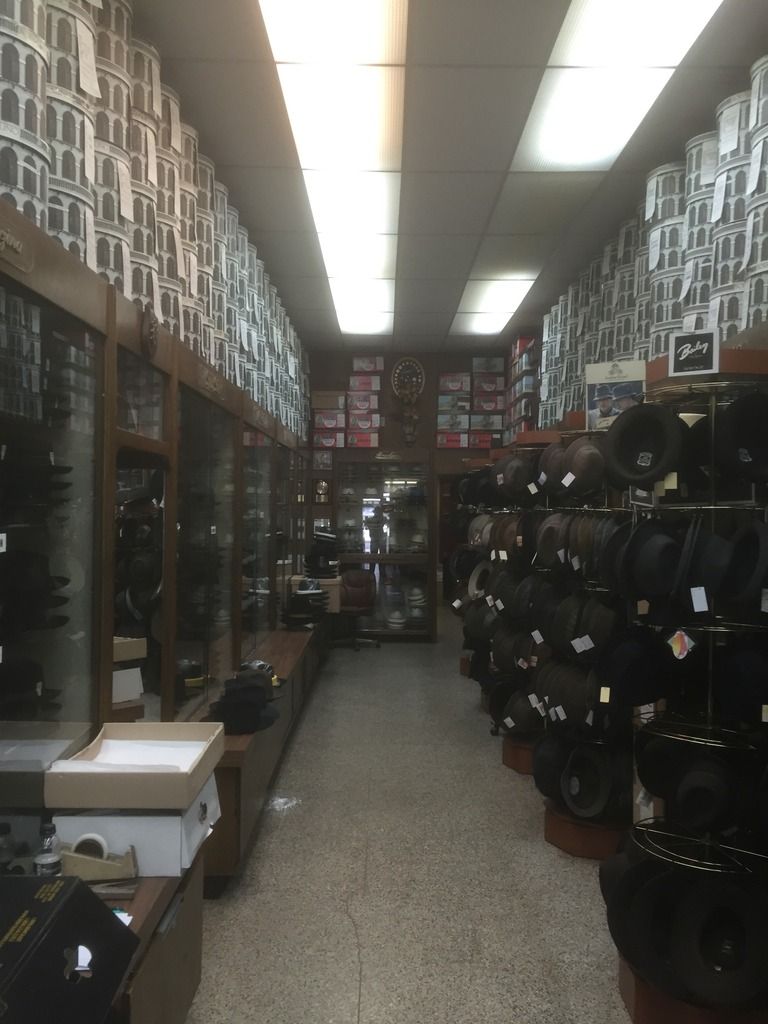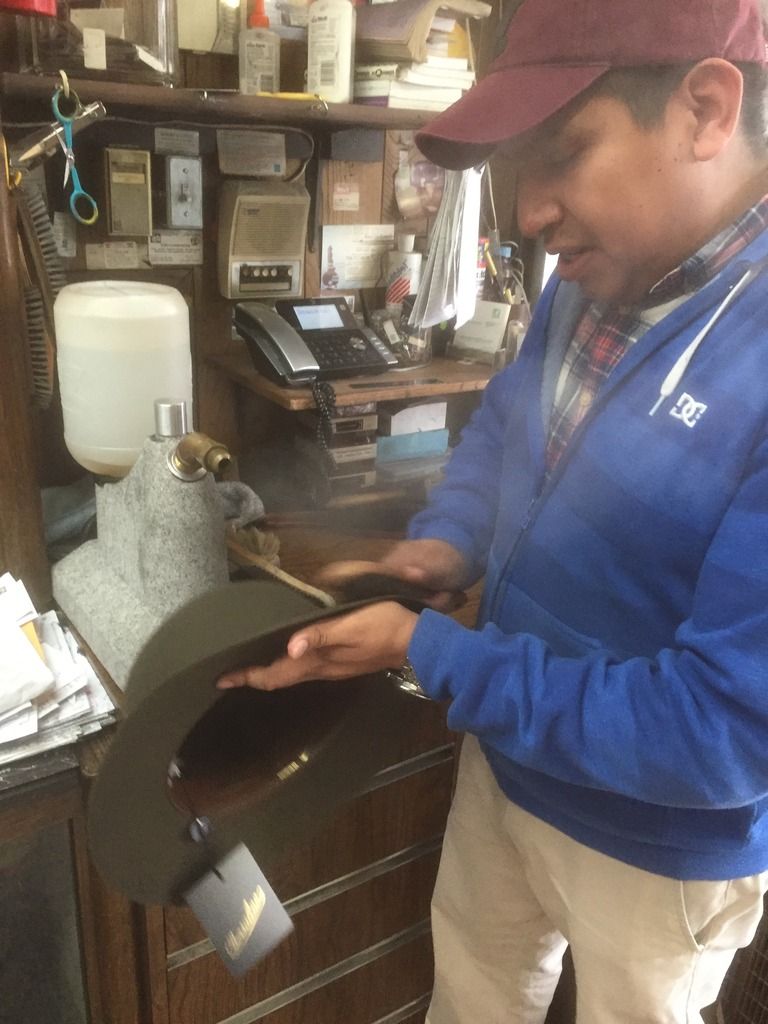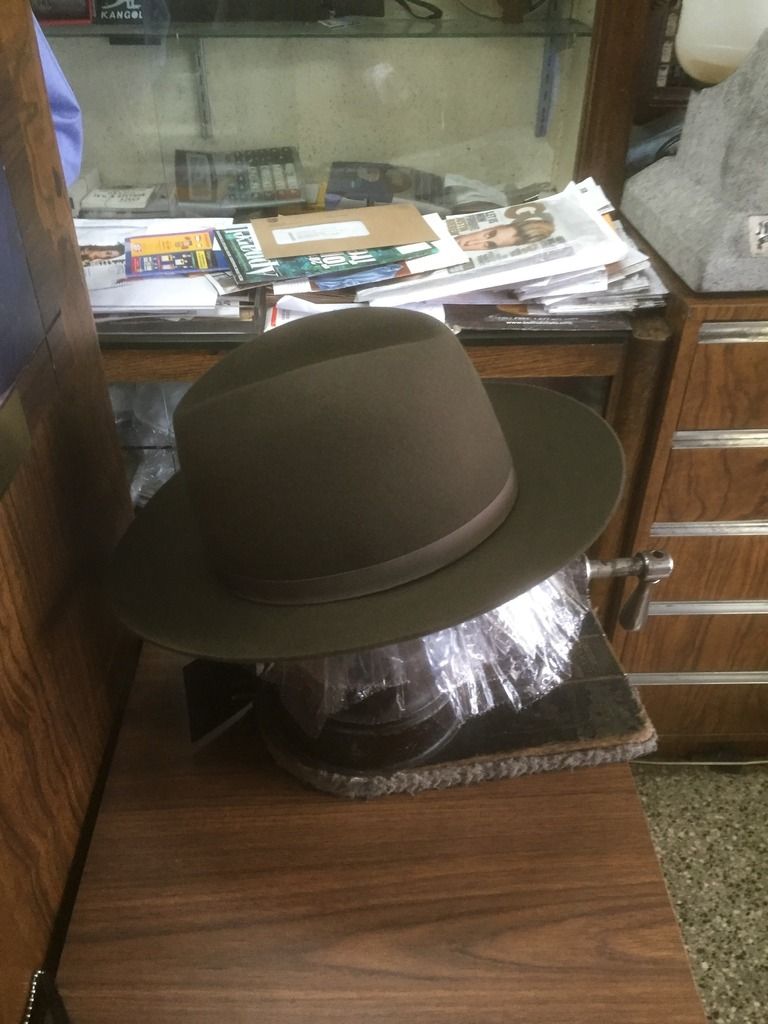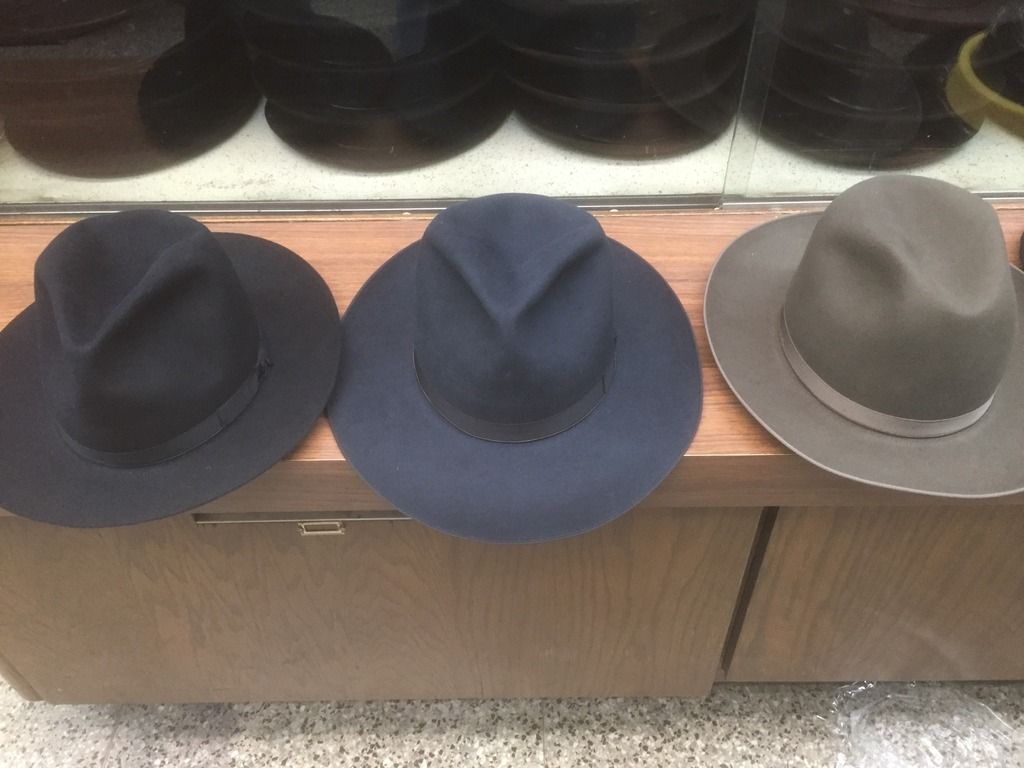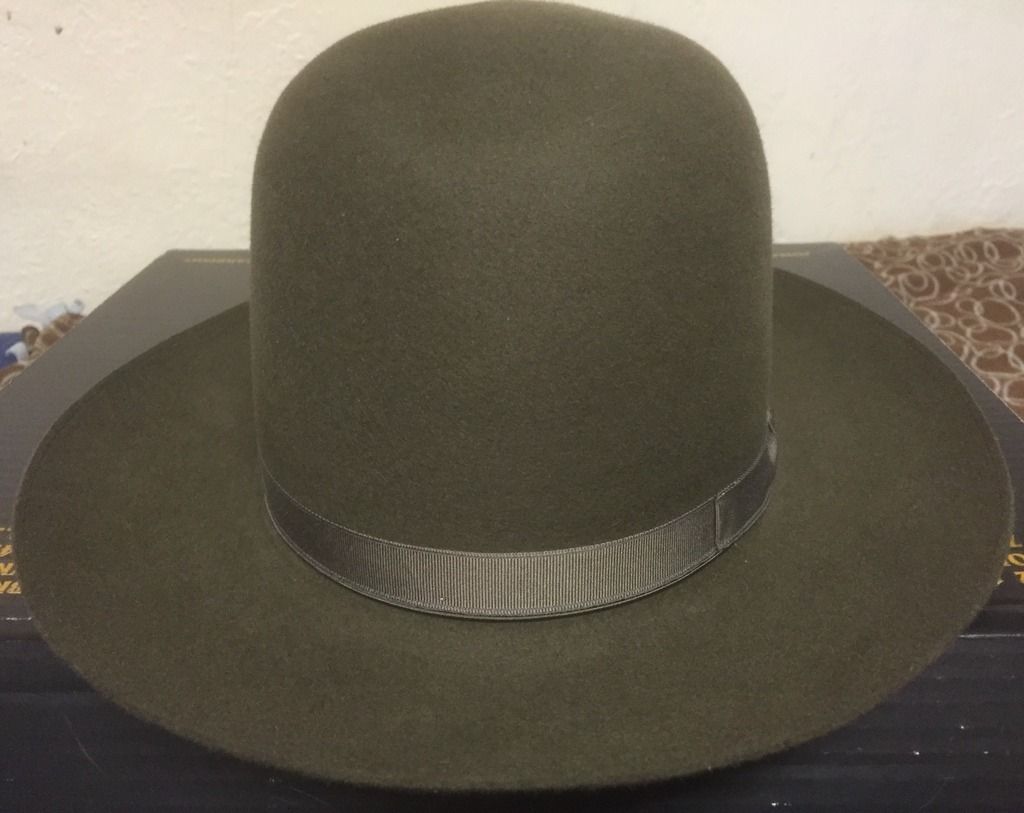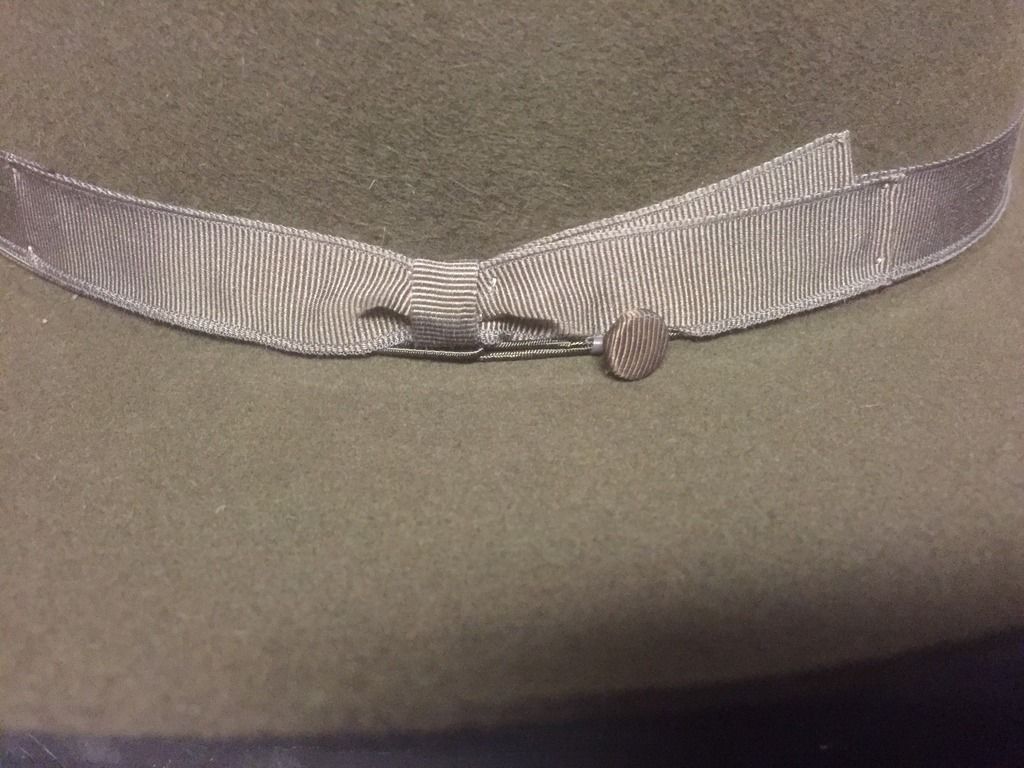- Messages
- 10,953
- Location
- vancouver, canada
A Borsalino history
Over the past hundred years the history of the Borsalino is confused with that of the hat. In fact, even today in some vocabularies of Borsalino Italian language with a lowercase b is considered a synonym of hat identifying product and brand in an indissoluble marriage. So much so that the fortunes of one were those of the other. And when the male headdress began its slow but steady decline in the 'Compagnia di Alessandria” it followed him even in bad times. The great adventure had begun in the middle of last century. 1850 ran the historian of industry Guido Barberis author of several volumes on the company's affairs when a sixteen year old boy, Giuseppe Borsalino, what later would be called “u Siur Pipen”, leaves Alessandria and apprentice working in a hat workshop Sebastiano Camagna to go to France.
France had to learn the eye on the guy Borsalino. He already knew that in Provence, in Lyon and in Bordeaux could gain experience in the best companies in the industry. And so he decides to spend six years of his life in the best French shops concluding the internship in Paris in what was a kind of hat universities: from Berteil in Rue du Temple. He returned to Alessandria in 1857 founding the Giuseppe Borsalino with his brother Lazzaro. Four years later it has 130 employees, twice as high as current and produces 300 hats a day. But it’s just the beginning. Borsalino has understood that the secret is in automation. He use the profits to buy in France, Germany and England the most advanced machines. This is the birth of modern Italian hatters, an industry, within a few decades, would put in the shadow competitors from around the world. The Borsalino, in fact, have an impeccable quality, using excellent raw materials but most are produced thanks to the most advanced of era mechanization.
In the 1870 “u Siur Pipen” founded a factory to produce top hats in Genoa and a hat factory in Venice to exports in the Balkans, confiding it to Henry Robert, a French expert. In 1888, however, Giuseppe Borsalino changes strategy: dismantles establishments in Liguria and Veneto and concentrates production in newborn plant via Cento Cannoni in Alessandria. It is precisely at the turn of the century that the Borsalino tip his cards on export, invading Europe and the United States with its felts. On the death of Joseph in 1900 the company has a thousand workers and produces nearly a million hats in a year. It's up to Teresio Borsalino, the son of Joseph thirty-three bring the factory to its maximum splendor. And in fact during the roaring 20’ factory he touched the roof of the 2 million per year hats, sold in foreign countries to over 50 percent. A period, this, that sees the consolidation of the brand image in the United States and South America.
Unfortunately, the crisis of 1929 gives a first blow to the hat industry. During the following decade the production is halved settling around a million pieces. For the hat is the beginning of the swan song. As Teresio consolidated another family tradition: the charity. An impressive list of works, from the drains of Alessandria to aqueduct, to the elderly resort, to civil hospital and the sanatorium. Not to mention a social policy to cutting edge with Cassa Malattie, Cassa Infortuni, Cassa Pensioni, in addition to an Educational employee’s children. In the early decades of the century, the family Borsalino spends 50 million to charity; Barberis says actualized approaching 50 billion of Italian lire. Few business dynasties have done so much for their city. Perhaps the only possible comparison is between Olivetti and Ivrea. With the disappearance of Teresio Borsalino, in 1939, the comand passes to the great-grandson Teresio Usuelli. This last, was the son of Celestino Usuelli singular figure of aviator, mountaineer and car racer and Julia Strada, daughter of Rosa Borsalino, one of Teresio Borsalino sisters. Teresio second will be an entrepreneur of race, man, strong-willed, endowed with charisma and considerable entrepreneurial skills, unfortunately had to deal with an objective problem: the decline of the hat.
Usuelli also will also pay his consuming love for that accessory (in the past, no one would have considered such) that fashion, changing tastes and changing social conditions withdrawing from everyday life. Mind you, the young Usuelli, which would lead the Borsalino during reconstruction, clashing with unions and reopening to the company the way of export, it was deluded. But a serious business owner who would defend in the trenches the fate of the company. After the war Usuelli rolls up his sleeves and immediately buy the hat factory Vanzina of Pavia thus covering the lower-end market. Exports, however, after the surge to nearly 410,000 units in 1946 down to less than 290,000 in 1948. But Teresio not discouraged and takes it hard.
The heyday after II WW. In the beginning of the 50s the young industrial Alexandrian can feel satisfied. On one side was able to bring back the export beyond 400,000 units regaining one by one the foreign markets energetic. While the other reached the roof of 420-430 thousand hats sold in Italy. At the same time the occupation established around 1600 units recovering in productivity and capacity utilization. Borsalino, which celebrated in 1957 the centenary of activity, appeared to be a solid company that looked at the future with confidence after reaching a point of equilibrium around the 800,000 annual hats. In fact it is just an illusion. Starting from early sixties the slow, steady, customer disaffection for lobbies, felts, top hats and caps becomes now a general habit. Usuelli reacts by expanding the offer with straw hats and cloth. In 1968, he rushes to Moscow, where there was the exhibition of Italian industry. Nothing to do with the Soviets, he did not reached any agreement to expand the activy in the East Europe, while sales continue to decline. Usuelli had this strong passion for the hat to prevent him from diversifying production in clothing as recommended by its advisers. The decline turns into a landslide. The Borsalino hats are the best in the world, the quality of its felts makes school. But people do not want to know. In 1961 Borsalino produces 603,000 pieces, ten years later it comes down to share 470 000 while in 1981 when Teresio passes the activities to Vittorio Vaccarino, descending from another daughter of former owners. From this moment, the Borsalino is no longer a myth, but a company that does what it can to survive. During the 80 we will see the sale of the historic factory in Via Cento Cannoni and a series of fast-paced changes of ownership. Giuseppe Borsalino, sales dropped to 231,000 units with 330 employees.Today Borsalino has about sixty employees and a turnover of about 9 billion. The control is in the hands of Fisi, financial Milan chaired by Viviana Lecchi Usuelli while Giovanna, wife of Teresio, retains a minority stake. The production of hats now resized was sided by the gloves and scarves. The company has also given its name to a perfume. Of the heroic times of Joseph and the two Teresi it remains only the brand appeal.
This was the situation in Borsalino at the end of 1990
This article appeared in the newspaper La Repubblica October 12, 1990
